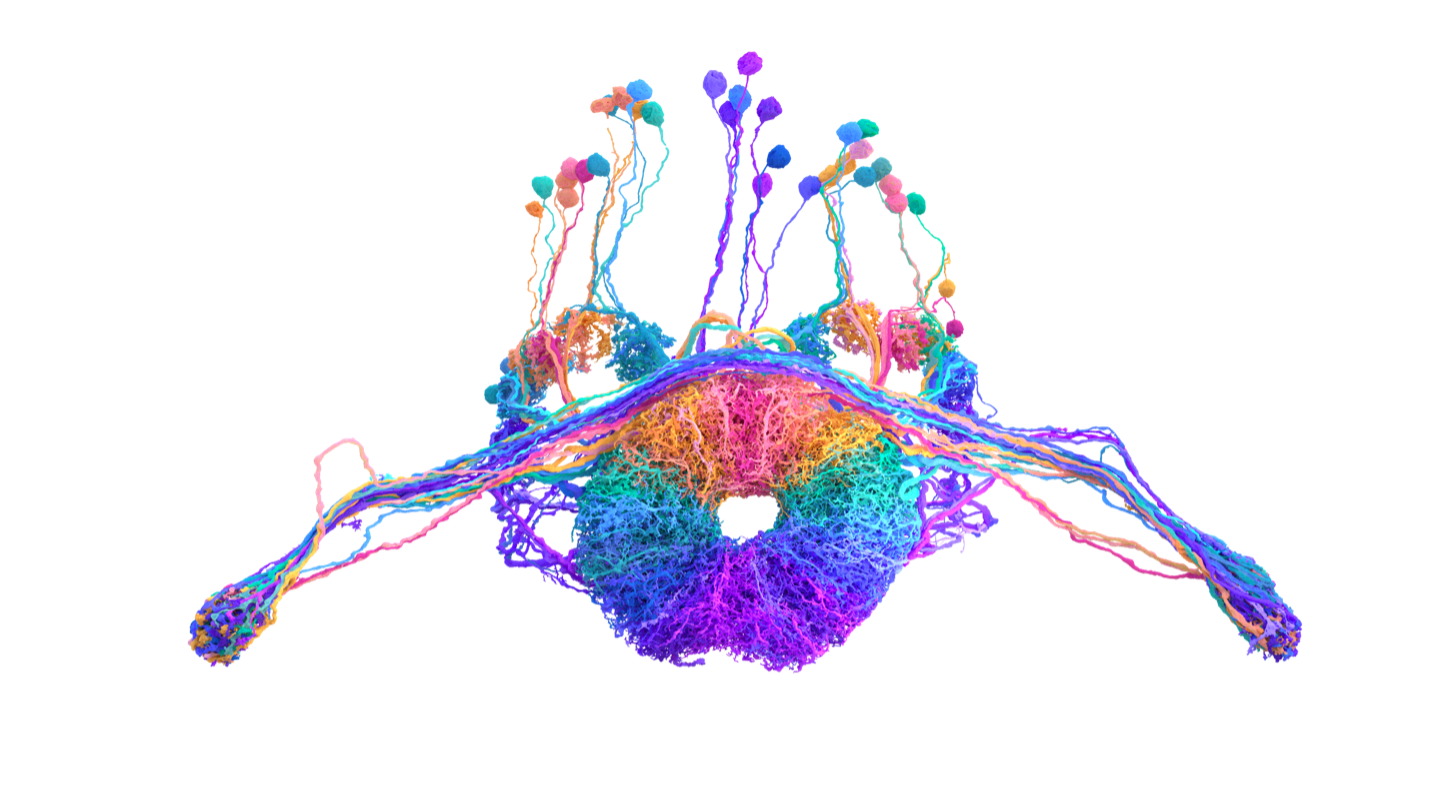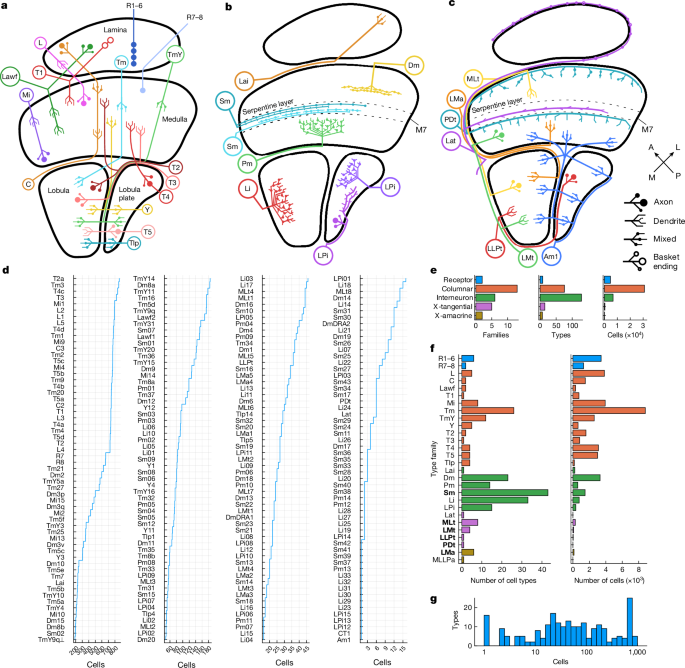2024-10-07 カリフォルニア大学サンタバーバラ校(UCSB)

カリフォルニア大学サンタバーバラ校の神経科学者たちは、ショウジョウバエの前視覚経路全体を再構築し、3,000以上のニューロンの接続を解明しました。この研究は、ナビゲーションに関わる「コンパスニューロン」など、動物が環境を認識し、方向感覚を持つ仕組みを理解する手がかりとなります。この研究成果は、動物の脳の複雑な回路を理解し、人間の脳の解明や自動車の自律航法に役立つ可能性があります。
<関連情報>
- https://news.ucsb.edu/2024/021631/researchers-reconstruction-fruit-flys-anterior-visual-pathway-will-lead-insights-animal
- https://www.nature.com/articles/s41586-024-07981-1
視覚系の神経パーツリストと配線図 Neuronal parts list and wiring diagram for a visual system
Arie Matsliah,Szi-chieh Yu,Krzysztof Kruk,Doug Bland,Austin T. Burke,Jay Gager,James Hebditch,Ben Silverman,Kyle Patrick Willie,Ryan Willie,Marissa Sorek,Amy R. Sterling,Emil Kind,Dustin Garner,Gizem Sancer,Mathias F. Wernet,Sung Soo Kim,Mala Murthy,H. Sebastian Seung & The FlyWire Consortium
Nature Published:02 October 2024
DOI:https://doi.org/10.1038/s41586-024-07981-1

Abstract
A catalogue of neuronal cell types has often been called a ‘parts list’ of the brain1, and regarded as a prerequisite for understanding brain function2,3. In the optic lobe of Drosophila, rules of connectivity between cell types have already proven to be essential for understanding fly vision4,5. Here we analyse the fly connectome to complete the list of cell types intrinsic to the optic lobe, as well as the rules governing their connectivity. Most new cell types contain 10 to 100 cells, and integrate information over medium distances in the visual field. Some existing type families (Tm, Li, and LPi)6,7,8,9,10 at least double in number of types. A new serpentine medulla (Sm) interneuron family contains more types than any other. Three families of cross-neuropil types are revealed. The consistency of types is demonstrated by analysing the distances in high-dimensional feature space, and is further validated by algorithms that select small subsets of discriminative features. We use connectivity to hypothesize about the functional roles of cell types in motion, object and colour vision. Connectivity with ‘boundary types’ that straddle the optic lobe and central brain is also quantified. We showcase the advantages of connectomic cell typing: complete and unbiased sampling, a rich array of features based on connectivity and reduction of the connectome to a substantially simpler wiring diagram of cell types, with immediate relevance for brain function and development.


